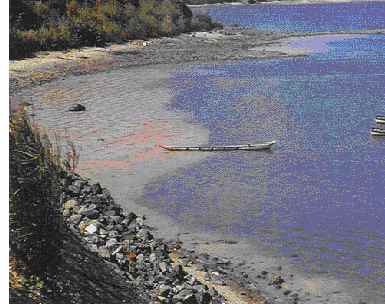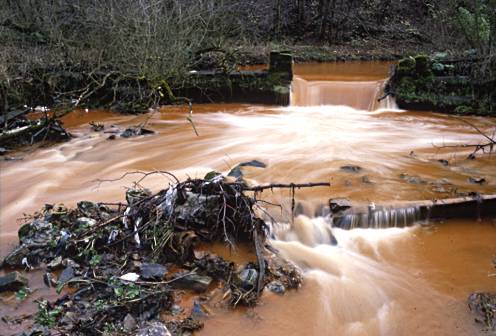A polluted river
Water pollution in Hong Kong
Wastewater is the main cause of water pollution in Hong Kong. Sewage is wastewater produced by people, and comes from homes, offices, restaurants and factories. Wastewater is also discharged from livestock farms. Runoff from urban areas and from fertilised fields in rural areas also contributes to water pollution. Among the pollutants in sewage are:
solids, such as paper and rags, which float and are unsightly;
organic material, which consumes oxygen from the water as it decomposes;
bacteria, which are a primary public health concern;
ammonia, which is highly toxic to fish;
nitrogen, which can cause excessive growth of algae, sometimes forming red tides;
toxic metals, which can accumulate in sediments and poison marine life and our seafood.
The degree of treatment and the final discharge method and location determine whether wastewater causes adverse impacts. At present, some of our wastewater discharges at the seawall without receiving any treatment. Most of our wastewater is collected in sewers and is then screened and degritted to remove large solids prior to discharge via purpose-designed outfalls. Some also receives:
primary treatment (sedimentation), which removes about 30% of organic material;
chemical treatment, which removes over 60% of organic material;
biological treatment, which removes up to 90% of the organic material as well as ammonia and some of the nitrogen;
disinfection, which provides much better removal of bacteria than is possible with the above processes.
Home
|
|
Introduction of water pollution
Water Pollution, contamination of streams, lakes, underground water, bays, or oceans by substances harmful to living things. Water is necessary to life on earth. All organisms contain it; some live in it; some drink it. Plants and animals require water that is moderately pure, and they cannot survive if their water is loaded with toxic chemicals or harmful microorganisms. If severe, water pollution can kill large numbers of fish, birds, and other animals, in some cases killing all members of a species in an affected area. Pollution makes streams, lakes, and coastal waters unpleasant to look at, to smell, and to swim in. Fish and shellfish harvested from polluted waters may be unsafe to eat. People who ingest polluted water can become ill, and, with prolonged exposure, may develop cancers or bear children with birth defects.
 Red Tide in Rocky Harbour which can cause massive fish kills
Red Tide in Rocky Harbour which can cause massive fish kills
|

